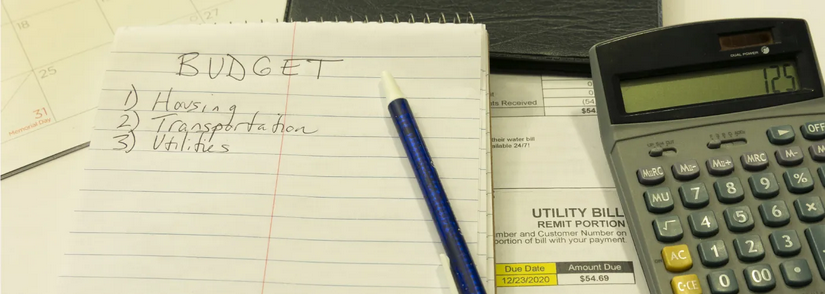Finite Mathematics
Topic outline
-
Welcome to Finite Mathematics [CMAT 1313]!
Course Introduction
This Finite Mathematics [CMAT 1313] course adheres to the scope and sequence of a one-semester Finite Mathematics course. The course description provided is the from the statewide common course information.Course Description: Systems of linear equations, matrices, and matrix algebra; linear inequalities; linear programming; counting techniques: permutations and combinations; probability; basic concepts in financial mathematics (annuities
included); and an introduction to statisticsUpon successful completion of this course, the student will be able to:
- Demonstrate mastery of review topics from college algebra.
- Solve systems of linear equations and inequalities by graphing, algebraically, and with matrices.
- Solve linear programming problems.
- Use Venn Diagrams to solve problems with sets and the relationship between sets.
- Apply rules of symbolic logic to assess the validity of logical arguments.
- Use basic counting principles, including combinations and permutations, to solve problems.
- Recognize and solve simple interest, compound interest, and annuities.
- Organize and interpret data in scenarios involving descriptive or inferential statistics.
Adopting instructors can embed a welcome video or add additional text here.Structure of the CourseThe course includes 8 content Modules which covers each of the 8 chapters in the textbook (provided link). Each module includes a brief introduction text with module learning objectives, links to the corresponding Pressbook sections, additional resources (video lessons), homework assignments in MyOpenMath, a Quiz in MyOpenMath, and a Q&A discussion forum for that Module. There are additional modules for smaller Exams, a Midterm Exam, and/or Final Exam.
Navigating the Course
This course is set up in Modules covering various topics which may be accessed from the course navigation menu on the left or by scrolling below. Modules may be collapsed in the menu and in the body of the course to minimize scrolling. Many items are required and may be marked as completed automatically when the activity has been submitted (the broken check box), but others will be marked as done by the student (the solid check box).
Please move through the items below and continue through the Learner Support and Getting Started modules before moving on to Module 1. Be sure to check for announcements and due dates to stay on track.Adopting instructors can embed a navigation video or add additional text here.
 This course and its contents are licensed under a Creative Commons Attribution 4.0 International License by LOUIS: The Louisiana Library Network, except where otherwise noted. Adopting instructors should edit the About Your Instructor and Office Hours Information pages in this Module.
This course and its contents are licensed under a Creative Commons Attribution 4.0 International License by LOUIS: The Louisiana Library Network, except where otherwise noted. Adopting instructors should edit the About Your Instructor and Office Hours Information pages in this Module. -
Adopting instructors should edit all pages in this Module - as per their own Institution's policies.
-
This module contains all the items you should review and complete before you begin Module 1. Before moving on, be sure to:
- Check the News and Announcements Forum
- Read the Course Syllabus
- Introduce yourself to the class
- Read the instructions for the Q & A Forum
Good luck in the course!-
Use this forum to tell us a little about yourself and your interests. Some topic ideas:
- What is your field of study/research interest or concentration?
- What are you most interested in learning about in this class and why?
- Have you ever taken an online class before?
- Any other information you would like to share with your classmates, such as special interests or activities.
Post a picture! We look forward to meeting you.
-
Use this forum to ask your instructor any questions you have about the course. You may post at any time, and your instructor will respond here. Be as specific as possible.
Please keep in mind that others can see your posts, so do not post any personal information. If you have questions about your grade, please email your instructor directly. You can expect a response to posts and emails within [X] hours. [Recommendation is 24 hours M-F, next business day on weekends.]
Subscription should be set to Auto.
-
Use this forum to tell us a little about yourself and your interests. Some topic ideas:
- What is your field of study/research interest or concentration?
- What are you most interested in learning about in this class and why?
- Have you ever taken an online class before?
- Any other information you would like to share with your classmates, such as special interests or activities.
Post a picture! We look forward to meeting you.
-
Use this forum to ask your instructor any questions you have about the course. You may post at any time, and your instructor will respond here. Be as specific as possible.
Please keep in mind that others can see your posts, so do not post any personal information. If you have questions about your grade, please email your instructor directly. You can expect a response to posts and emails within [X] hours. [Recommendation is 24 hours M-F, next business day on weekends.]
Subscription should be set to Auto.
- Check the News and Announcements Forum
-

Imagine being a pilot, but not just any pilot—a drone pilot. Drones, or unmanned aerial vehicles, are devices that can be flown remotely. They contain sensors that can relay information to a command center where the pilot is located. Larger drones can also carry cargo. In the near future, several companies hope to use drones to deliver materials and piloting a drone will become an important career. Law enforcement and the military are using drones rather than send personnel into dangerous situations.
Building and piloting a drone requires the ability to program a set of actions, including taking off, turning, and landing. This, in turn, requires the use of linear equations. In this chapter, you will explore linear equations, develop a strategy for solving them, and relate them to real-world situations.
Image Caption: This drone is flying high in the sky while its pilot remains safely on the ground. (credit: “Unsplash” / Pixabay)
(Content & Image Source: Chapter 2 Introduction, Intermediate Algebra, Lynn Marecek and Andrea Mathis, OpenStax, CC BY 4.0 License)
Upon completion of this module, you will be able to:1.1 Use a General Strategy to Solve Linear Equations- Solve linear equations using a general strategy
- Classify equations
- Solve equations with fraction or decimal coefficients
1.2 Solve a Formula for a Specific Variable
- Solve a formula for a specific variable
1.3 Graph Linear Equations in Two Variables- Plot points in a rectangular coordinate system
- Graph a linear equation by plotting points
- Graph vertical and horizontal lines
- Find the x- and y-intercepts
- Graph a line using the intercepts
1.4 Slope of a LineTo achieve these objectives:- Find the slope of a line
- Graph a line given a point and the slope
- Graph a line using its slope and intercept
- Choose the most convenient method to graph a line
- Graph and interpret applications of slope–intercept
- Use slopes to identify parallel and perpendicular lines
- Read the Module 1 Introduction (see above)
- Read Sections 1.1 - 1.4 of Chapter 1: Linear Equations in Finite Mathematics (links to each Section provided below)
- Watch the Videos provided in the Video Lessons pages for each Section (links provided below)
- Complete the MyOpenMath Homework Assignments for each Section (links provided below) - These are graded!
- Complete the MyOpenMath Quiz for Chapter 1 (link provided below) - This is graded!
- Once you complete the Quiz, upload your work in the Quiz Work Upload Assignment using the submission link below.
- Post in the Chapter 1 Q&A Discussion Forum - link provided below.
Note the check boxes to the right that help you track your progress: some are automatic, and some are manual.
Module Pressbooks Resources and Activities
You will find the following resources and activities in this module at the Pressbooks website. Click on the links below to access or complete each item.
-

A matrix is a 2 dimensional array of numbers arranged in rows and columns. Matrices provide a method of organizing, storing, and working with mathematical information. Matrices have an abundance of applications and use in the real world. Matrices provide a useful tool for working with models based on systems of linear equations. We’ll use matrices in this chapter to solve systems of linear equations with several variables.
Matrices are used in encryption and in economic modelling. They are also used in optimization problems such as maximizing profit or revenue, or minimizing cost. Matrices are used in business for scheduling, routing transportation and shipments, and managing inventory. Just about any application that collects and manages data can apply matrices. Use of matrices has grown as the availability of data in many areas of life and business has increased. They are important tools for organizing data and solving problems in all fields of science, from physics and chemistry, to biology and genetics, to meteorology, and economics.
Computer science analyzes diagrams of networks to understand how things are connected to each other, such as relationships between people on a social website, and relationships between results in line search and how people link from one website to another. The mathematics to work with network diagrams comprise the field of “graph theory”; it relies on matrices to organize the information in the graphs that diagram connections and associations in a network. For example, if you use Facebook or Linked-In, or other social media sites, these sites use network graphs and matrices to organize your relationships with other users.
Image Caption: In computer science, matrix mathematics lies behind animation of images in movies and video games. (Image Source: "Monitor, Binary, Binary system image.", Pixabay, Creative Commons Zero (CC0) license)
(Content Source: 2.1: Introduction to Matrices, Applied Finite Mathematics, Sekhon and Bllom, LibreTexts, CC BY License)
Upon completion of this module, you will be able to:2.1 Systems of Equations- Solve linear systems using graphing
- Solve linear systems using substitution
- Solve linear systems using elimination (addition)
- Classify systems as independent, inconsistent, or dependent
- Solve linear systems in 3 variables
2.2 Solving Systems Using Matrices- Write a system of equations as an augmented matrix.
- Use a matrix and row-reduction (Gaussian elimination) to solve a system of equations.
- Interpret the solutions from an augmented matrix.
- Recognize dependent and inconsistent systems of equations.
2.3 Matrix Operations- Identify the dimensions of a matrix
- Identify the entries of a matrix
- Add and subtract matrices
- Calculate a scaler multiple of a matrix
- Multiply matrices
2.4 Solving Systems with Inverses- Find the inverse of 2x2 and 3x3 matrices
- Use the formula for 2x2 matrices
- Use augmenting for 2x2 and 3x3 matrices
- Use the inverse to solve a system of equations
To achieve these objectives:- Read the Module 2 Introduction (see above)
- Read Sections 2.1 - 2.4 of Chapter 2: Matrices in Finite Mathematics (links to each Section provided below)
- Watch the Videos provided in the Video Lessons pages for each Section (links provided below)
- Complete the MyOpenMath Homework Assignments for each Section (links provided below) - These are graded!
- Complete the MyOpenMath Quiz for Chapter 2 (link provided below) - This is graded!
- Once you complete the Quiz, upload your work in the Quiz Work Upload Assignment using the submission link below.
- Post in the Chapter 2 Q&A Discussion Forum - link provided below.
Note the check boxes to the right that help you track your progress: some are automatic, and some are manual.Module Pressbooks Resources and Activities
You will find the following resources and activities in this module at the Pressbooks website. Click on the links below to access or complete each item.
-
 In this module you will take your Exam 1 .
In this module you will take your Exam 1 . Read the Exam 1 Information and Instructions page carefully and take note of any special submission guidelines.
Upon completion of this module, you will have:- Read and viewed the Exam 1 Information and Instructions page
- Scheduled your exam with the proctoring service [if applicable, delete if not needed]
- Post in the Exam 1 Q&A Discussion Forum - link provided below.
- Prepared for and submitted your Exam 1 [revise as needed]
- Uploaded your work in the Exam 1 Work Upload Assignment using the submission link below.
Attribution of image: ("Math, Numbers, Number image. Free for use." Pixabay.com. https://pixabay.com/photos/math-numbers-number-counting-5247958/)Adopting instructors: Edit the Exam 1 Information and Instructions page.
-

A company produces a basic and premium version of its product. The basic version requires 20 minutes of assembly and 15 minutes of painting. The premium version requires 30 minutes of assembly and 30 minutes of painting. If the company has staffing for 3,900 minutes of assembly and 3,300 minutes of painting each week. How many items can then produce within the limits of their staffing?
Notice this problem is different than the question we asked in the first section, since we are no longer concerned about fully utilizing staffing, we are only interested in what is possible. Just as we created equations in the first section, we can now create inequalities, since we know the hours used in production needs to be less than or equal to the hours available. This leads to two inequalities that we can graph to find the solution. In the solution set we can see the solution to the system of equations. The solution set shows that if the company is willing to not fully utilize the staffing, there are many other possible combinations of products they could produce.
The techniques we will use in this chapter are key to a branch of mathematics called linear programming, which is used extensively in business.
Image Caption: A photo of a 3-d printing technology. (Image Source: "Printer, 3d, Technology image.", Pixabay, Creative Commons Zero (CC0) license)
(Content Source: Systems of Equations and Linear Programming, BUSI1915 – Fundamentals of Business Mathematics, OER Lab, CC BY-NC-SA 4.0 License)
Upon completion of this module, you will be able to:
3.1 Inequalities in One Variable- Solve linear inequalities
- Solve compound inequalities
3.2 Graph Linear Inequalities in Two Variables- Verify solutions to an inequality in two variables.
- Recognize the relation between the solutions of an inequality and its graph.
- Graph linear inequalities in two variables
- Solve applications using linear inequalities in two variables
3.3 Linear Programming- Write an objective function.
- Determine a feasible region for a system of linear inequalities.
- Solve linear programming problems graphically.
To achieve these objectives:- Read the Module 3 Introduction (see above)
- Read Sections 3.1 - 3.3 of Chapter 3: Linear Programming in Finite Mathematics (links to each Section provided below)
- Watch the Videos provided in the Video Lessons pages for each Section (links provided below)
- Complete the MyOpenMath Homework Assignments for each Section (links provided below) - These are graded!
- Complete the MyOpenMath Quiz for Chapter 3 (link provided below) - This is graded!
- Once you complete the Quiz, upload your work in the Quiz Work Upload Assignment using the submission link below.
- Post in the Chapter 3 Q&A Discussion Forum - link provided below.
Note the check boxes to the right that help you track your progress: some are automatic, and some are manual.Module Pressbooks Resources and Activities
You will find the following resources and activities in this module at the Pressbooks website. Click on the links below to access or complete each item.
-

The topic of money management is a broad and sometimes complex one. Ultimately, personal money management involves managing both our debt and also our savings and investments.
In 2021, the average American had consumer debt balance of $96,371. Nearly $100,000 per person. And less than 25% of Americans are debt free. Consumer debt can include mortgages, credit cards, as well as student loans. A key question all consumers should consider is how to manage debt and not become overburdened by it. The first step is to create a budget, which puts earnings into perspective, indicating what we can, and cannot, afford. A budget also entails setting aside certain funds for savings and investment, which help us achieve our short- and long-term goals.
Creating a budget requires an understanding of how money—debt and savings—works. Initially, percentages and interest need to be understood. They drive most of what happens with debt and savings. With that understanding, discussions of buying a house, a car, or incurring credit card debt can be addressed from a financial perspective. All the while, retirement is waiting. Preparing for retirement involves saving and saving earlier rather than later. The power of compound interest is on full display when saving early.
This chapter covers some of the basics of money management: percentages, interest, savings, investments, annuities, and loans.
Image Caption: Financial health helps you realize your goals. (credit: modification of work "Budget and Bills" by Alabama Extension/Flickr, Public Domain)
(Content & Source: Chapter 6 Introduction, Contemporary Mathematics, Donna Kirk, OpenStax, CC BY 4.0 License)
Upon completion of this module, you will be able to:4.1 Simple and Compound Interest- Calculate simple interest
- Calculate annual percentage rate
- Calculate compound interest
- Calculate annual percentage yield
4.2 Annuities- Find the future value of an annuity
- Find deposits needed to fund an annuity
- Find the interest earned
4.3 Payout Annuities- Find the present value of an annuity (principal required)
- Find the payments that can be made from a payout annuity
4.4 Loans- Find the amount of a loan given the payments
- Find the payments required given the loan amount
- Find the remaining balance of a loan
4.5 Multistage Finance Problems- Recognize the type of finance problem given a situation
- Breaking complex finance problems into smaller, simpler pieces
To achieve these objectives:- Read the Module 4 Introduction (see above)
- Read Sections 4.1 - 4.5 of Chapter 4: Finance in Finite Mathematics (links to each Section provided below)
- Watch the Videos provided in the Video Lessons pages for each Section (links provided below)
- Complete the MyOpenMath Homework Assignments for each Section (links provided below) - These are graded!
- Complete the MyOpenMath Quiz for Chapter 4 (link provided below) - This is graded!
- Once you complete the Quiz, upload your work in the Quiz Work Upload Assignment using the submission link below.
- Post in the Chapter 4 Q&A Discussion Forum - link provided below.
Note the check boxes to the right that help you track your progress: some are automatic, and some are manual.Module Pressbooks Resources and Activities
You will find the following resources and activities in this module at the Pressbooks website. Click on the links below to access or complete each item.
-
 In this module you will take your Midterm Exam or Exam 2.
In this module you will take your Midterm Exam or Exam 2. Read the Midterm Exam or Exam 2 Information and Instructions page carefully and take note of any special submission guidelines.
Upon completion of this module, you will have:- Read and viewed the Midterm Exam or Exam 2 Information and Instructions page
- Scheduled your exam with the proctoring service [if applicable, delete if not needed]
- Post in the Midterm Exam or Exam 2 Q&A Discussion Forum - link provided below.
- Prepared for and submitted your Midterm Exam or Exam 2 [revise as needed]
- Uploaded your work in the Midterm Exam or Exam 2 Work Upload Assignment using the submission link below.
Attribution of image: ("Math, Numbers, Number image. Free for use." Pixabay.com. https://pixabay.com/photos/math-numbers-number-counting-5247958/)Adopting instructors: Edit the Midterm Exam or Exam 2 Information and Instructions page.
-

Think of a drawer in your kitchen used to store flatware. This drawer likely holds forks, spoons, and knives, and possibly other items such as a meat thermometer and a can opener. The drawer in this case represents a tool used to group a collection of objects. The members of the group are the individual items in the drawer, such as a fork or a spoon.
The members of a set can be anything, such as people, numbers, or letters of the alphabet. In statistical studies, a set is a well-defined collection of objects used to identify an entire population of interest. For example, in a research study examining the effects of a new medication, there can be two sets of people: one set that is given the medication and a different set that is given a placebo (control group). In this chapter, we will discuss sets and Venn diagrams, which are graphical ways to show relationships between different groups.
Image Caption: A flatware drawer is like a set in that it contains distinct objects. (credit: modification of work “silverware” by Jo Naylor/Flickr, CC BY 2.0)
(Content & Image Source: Chapter 1 Introduction, Contemporary Mathematics, Donna Kirk, OpenStax, CC BY 4.0 License)
Upon completion of this module, you will be able to:5.1 Basic Set Concepts- Represent sets in a variety of ways.
- Represent well-defined sets and the empty set with proper set notation.
- Compute the cardinal value of a set.
- Differentiate between finite and infinite sets.
- Differentiate between equal and equivalent sets.
5.2 Subsets- Represent subsets and proper subsets symbolically.
- Compute the number of subsets of a set.
- Apply concepts of subsets and equivalent sets to finite and infinite sets.
5.3 Understanding Venn Diagrams- Utilize a universal set with two sets to interpret a Venn diagram.
- Utilize a universal set with two sets to create a Venn diagram.
- Determine the complement of a set.
5.4 Set Operations with Two Sets- Determine the intersection of two sets.
- Determine the union of two sets.
- Determine the cardinality of the union of two sets.
- Apply the concepts of AND and OR to set operations.
- Draw conclusions from Venn diagrams with two sets.
5.5 Set Operations with Three Sets- Interpret Venn diagrams with three sets.
- Create Venn diagrams with three sets.
- Apply set operations to three sets.
- Prove equality of sets using Venn diagrams.
To achieve these objectives:- Read the Module 5 Introduction (see above)
- Read Sections 5.1 - 5.5 of Chapter 5: Sets in Finite Mathematics (links to each Section provided below)
- Watch the Videos provided in the Video Lessons pages for each Section (links provided below)
- Complete the MyOpenMath Homework Assignments for each Section (links provided below) - These are graded!
- Complete the MyOpenMath Quiz for Chapter 5 (link provided below) - This is graded!
- Once you complete the Quiz, upload your work in the Quiz Work Upload Assignment using the submission link below.
- Post in the Chapter 5 Q&A Discussion Forum - link provided below.
Note the check boxes to the right that help you track your progress: some are automatic, and some are manual.Module Pressbooks Resources and Activities
You will find the following resources and activities in this module at the Pressbooks website. Click on the links below to access or complete each item.
-

Casinos are big business; according to the American Gaming Association, commercial casinos in the United States brought in over $43 billion in revenue in 2019. Casinos must walk a fine line in order to be profitable. Their customers must lose more money than they win, on average, in order to stay in business. But if the chances of a single customer winning more money than they lose is too small, people will stop coming in the door to play the games.
In this chapter, we'll study the techniques a casino must use to determine how likely it is that a customer will win a particular game, and then how the casino decides how much money a winner will rake in so that the customers are happy, but the casino also turns a profit in the long run. In order to figure out those likelihoods, we have to be able to somehow consider every possible outcome of these games. For example, in a game that involves players receiving 5 cards from a deck of 52, there are 2,598,960 possibilities for each player. We'll start off this chapter by learning how to count those possible outcomes.
Image Caption: Roulette is a game whose outcomes are based entirely on the concept of probability. (credit: modification of work "Roulette wheel" by Håkan Dahlström/Flickr, CC BY 2.0)
(Content & Image Source: Chapter 7 Introduction, Contemporary Mathematics, Donna Kirk, OpenStax, CC BY 4.0 License)
Upon completion of this module, you will be able to:6.1 Concepts of Probability- Identify a simple event, a compound event, and the sample space of an experiment.
- Compute probabilities using the basic probability formula.
- Identify complementary events and compute their probabilities.
- Compute the odds of an event.
- Identify independent events and compute their probabilities.
- Compute the probability of an "or" statement.
6.2 Conditional Probability and Bayes Theory- Calculate conditional probability
- Use Bayes Theorem to determine the probability of an event
6.3 Counting- Understand basic counting techniques
- Use the basic counting rule to find probability
- Find probability using Permutations and Combinations
6.4 Expected Value- Determine the expected value of an event
To achieve these objectives:- Read the Module 6 Introduction (see above)
- Read Sections 6.1 - 6.4 of Chapter 6: Probability in Finite Mathematics (links to each Section provided below)
- Watch the Videos provided in the Video Lessons pages for each Section (links provided below)
- Complete the MyOpenMath Homework Assignments for each Section (links provided below) - These are graded!
- Complete the MyOpenMath Quiz for Chapter 6 (link provided below) - This is graded!
- Once you complete the Quiz, upload your work in the Quiz Work Upload Assignment using the submission link below.
- Post in the Chapter 6 Q&A Discussion Forum - link provided below.
Note the check boxes to the right that help you track your progress: some are automatic, and some are manual.Module Pressbooks Resources and Activities
You will find the following resources and activities in this module at the Pressbooks website. Click on the links below to access or complete each item.
-
 In this module you will take your Exam 2 or Exam 3. [revise as needed]
In this module you will take your Exam 2 or Exam 3. [revise as needed]Read the Exam 2 or Exam 3 Information and Instructions page carefully and take note of any special submission guidelines.
Upon completion of this module, you will have:- Read and viewed the Exam 2 or Exam 3 Information and Instructions page
- Scheduled your exam with the proctoring service [if applicable, delete if not needed]
- Post in the Exam 2 or Exam 3 Q&A Discussion Forum - link provided below.
- Prepared for and submitted your Exam 2 or Exam 3 [revise as needed]
- Uploaded your work in the Exam 2 or Exam 3 Work Upload Assignment using the submission link below.
Attribution of image: ("Math, Numbers, Number image. Free for use." Pixabay.com. https://pixabay.com/photos/math-numbers-number-counting-5247958/)Adopting instructors: Edit the Exam 2 or Exam 3 Information and Instructions page.
-

What is logic? Logic is the study of reasoning, and it has applications in many fields, including philosophy, law, psychology, digital electronics, and computer science.
In law, constructing a well-reasoned, logical argument is extremely important. The main goal of arguments made by lawyers is to convince a judge and jury that their arguments are valid and well-supported by the facts of the case, so the case should be ruled in their favor. Think about Thurgood Marshall arguing for desegregation in front of the U.S. Supreme Court during the Brown v. Board of Education of Topeka lawsuit in 1954, or Ruth Bader Ginsburg arguing for equality in social security benefits for both men and women under the law during the mid-1970s. Both these great minds were known for the preparation and thoroughness of their logical legal arguments, which resulted in victories that advanced the causes they fought for. Thurgood Marshall and Ruth Bader Ginsburg would later become well respected justices on the U.S. Supreme Court themselves.
In this chapter, we will explore how to construct well-reasoned logical arguments using varying structures. Your ability to form and comprehend logical arguments is a valuable tool in many areas of life, whether you're planning a dinner date, negotiating the purchase of a new car, or persuading your boss that you deserve a raise.
Image Caption: Logic is key to a well-reasoned argument, in both math and law. (credit: modification of work "Lady Justicia holding sword and scale bronze figurine with judge hammer on wooden table" by Jernej Furman/Flickr, CC BY 2.0)
(Content & Image Source: Chapter 2 Introduction, Contemporary Mathematics, Donna Kirk, OpenStax, CC BY 4.0 License)
Upon completion of this module, you will be able to:7.1 Statements and Quantifiers
- Identify logical statements.
- Represent statements in symbolic form.
- Negate statements in words.
- Negate statements symbolically.
- Translate negations between words and symbols.
- Express statements with quantifiers of all, some, and none.
- Negate statements containing quantifiers of all, some, and none.
7.2 Compound Statements
- Translate compound statements into symbolic form.
- Translate compound statements in symbolic form with parentheses into words.
- Apply the dominance of connectives.
7.3 Constructing Truth Tables- Interpret and apply negations, conjunctions, and disjunctions.
- Construct a truth table using negations, conjunctions, and disjunctions.
- Construct a truth table for a compound statement and interpret its validity.
7.4 Truth Tables for the Conditional and Biconditional- Use and apply the conditional to construct a truth table.
- Use and apply the biconditional to construct a truth table.
- Use truth tables to determine the validity of conditional and biconditional statements.
7.5 Equivalent Statements- Translate compound statements into symbolic form.
- Translate compound statements in symbolic form with parentheses into words.
- Apply the dominance of connectives.
7.6 De Morgan's Laws- Use De Morgan’s Laws to negate conjunctions and disjunctions.
- Construct the negation of a conditional statement.
- Use truth tables to evaluate De Morgan’s Laws.
7.7 Logical Arguments- Apply the law of detachment to determine the conclusion of a pair of statements.
- Apply the law of denying the consequent to determine the conclusion for pairs of statements.
- Apply the chain rule to determine valid conclusions for pairs of true statements.
To achieve these objectives:- Read the Module 7 Introduction (see above)
- Read Sections 7.1 - 7.7 of Chapter 7: Logic in Finite Mathematics (links to each Section provided below)
- Watch the Videos provided in the Video Lessons pages for each Section (links provided below)
- Complete the MyOpenMath Homework Assignments for each Section (links provided below) - These are graded!
- Complete the MyOpenMath Quiz for Chapter 7 (link provided below) - This is graded!
- Once you complete the Quiz, upload your work in the Quiz Work Upload Assignment using the submission link below.
- Post in the Chapter 7 Q&A Discussion Forum - link provided below.
Note the check boxes to the right that help you track your progress: some are automatic, and some are manual.
Module Pressbooks Resources and Activities
You will find the following resources and activities in this module at the Pressbooks website. Click on the links below to access or complete each item.
-
 Before the 2021 WNBA season, professional basketball player Candace Parker signed a contract with the Chicago Sky, which entitled her to a salary of $190,000. This amount was the 23rd highest in the league at the time. How did the team’s management decide on her salary? They likely considered some intangible qualities, like her leadership skills. However, much of their deliberations probably took into account her performance on the court. For example, Parker led the league in rebounds in the 2020 season (214 of them) and scored 14.7 points per game (which ranked her 18th among all WNBA players). Further, Parker brought 13 seasons of experience to the team. All of these factors played a role in deciding the terms of her contract.Upon completion of this module, you will be able to:
Before the 2021 WNBA season, professional basketball player Candace Parker signed a contract with the Chicago Sky, which entitled her to a salary of $190,000. This amount was the 23rd highest in the league at the time. How did the team’s management decide on her salary? They likely considered some intangible qualities, like her leadership skills. However, much of their deliberations probably took into account her performance on the court. For example, Parker led the league in rebounds in the 2020 season (214 of them) and scored 14.7 points per game (which ranked her 18th among all WNBA players). Further, Parker brought 13 seasons of experience to the team. All of these factors played a role in deciding the terms of her contract.Upon completion of this module, you will be able to:Estimating the value of one variable (like salary) based on other, measurable variables (points per game, experience, rebounds, etc.) is among the most important applications of statistics, which is the mathematical field devoted to gathering, organizing, summarizing, and making decisions based on data.
Image Caption: Statistics can be used to decide on a fair salary for sports stars. (credit: “Jasmine Powell goes up for a shot in a game against Jacksonville” by Lorie Shaull/Flickr, CC BY 2.0)
(Content & Image Source: Chapter 8 Introduction, Contemporary Mathematics, Donna Kirk, OpenStax, CC BY 4.0 License)
8.1 Gathering and Organizing Data
- Distinguish among sampling techniques.
- Organize data using an appropriate method.
- Create frequency distributions.
8.2 Visualizing Data8.3 Mean, Median, and Mode- Create charts and graphs to appropriately represent data.
- Interpret visual representations of data.
- Determine misleading components in data displayed visually.
- Calculate the mode of a dataset.
- Calculate the median of a dataset.
- Calculate the mean of a dataset.
- Contrast measures of central tendency to identify the most representative average.
- Solve application problems involving mean, median, and mode.
8.4 Range and Standard Deviation- Calculate the range of a dataset
- Calculate the standard deviation of a dataset
8.5 Percentiles- Compute percentiles.
- Solve application problems involving percentiles.
8.6 The Normal Distribution
- Describe the characteristics of the normal distribution.
- Apply the 68-95-99.7 percent groups to normal distribution datasets.
- Use the normal distribution to calculate a z-score
- Find and interpret percentiles and quartiles
8.7 Scatter Plots, Correlation, and Regression Lines- Construct a scatter plot for a dataset.
- Interpret a scatter plot.
- Distinguish among positive, negative and no correlation.
- Compute the correlation coefficient.
- Estimate and interpret regression lines.
To achieve these objectives:- Read the Module 8 Introduction (see above)
- Read Sections 8.1 - 8.7 of Chapter 8: Statistics in Finite Mathematics (links to each Section provided below)
- Watch the Videos provided in the Video Lessons pages for each Section (links provided below)
- Complete the MyOpenMath Homework Assignments for each Section (links provided below) - These are graded!
- Complete the MyOpenMath Quiz for Chapter 8 (link provided below) - This is graded!
- Once you complete the Quiz, upload your work in the Quiz Work Upload Assignment using the submission link below.
- Post in the Chapter 8 Q&A Discussion Forum - link provided below.
Note the check boxes to the right that help you track your progress: some are automatic, and some are manual.Module Pressbooks Resources and Activities
You will find the following resources and activities in this module at the Pressbooks website. Click on the links below to access or complete each item.
-
 In this module you will take your Final Exam.
In this module you will take your Final Exam. Read the Final Exam Information and Instructions page carefully and take note of any special submission guidelines.
Upon completion of this module, you will have:- Read and viewed the Final Exam Information and Instructions page
- Scheduled your exam with the proctoring service [if applicable, delete if not needed]
- Post in the Final Exam Q&A Discussion Forum - link provided below.
- Prepared for and submitted your Final Exam [revise as needed]
- Uploaded your work in the Final Exam Work Upload Assignment using the submission link below.
Attribution of image: ("Math, Numbers, Number image. Free for use." Pixabay.com. https://pixabay.com/photos/math-numbers-number-counting-5247958/)Adopting instructors: Edit the Final Exam Information and Instructions page.
